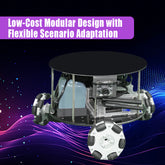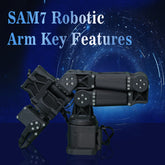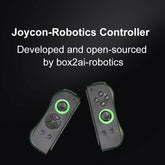π0.5:Embodied Intelligence Generalization Model for Open-World Environments
Ⅰ. Research Background and Objectives
Robots operating in open-world environments require cross-environment and cross-object generalization capabilities to execute complex tasks. Traditional Vision-Language-Action (VLA) models, reliant on single-robot datasets, struggle with unseen scenarios (e.g., novel home layouts or unfamiliar objects). This paper introduces π0.5, a model trained via multi-source data collaboration, which achieves the first demonstration of robots performing long-horizon tasks (e.g., 10–15-minute kitchen cleanup) in unseen environments, overcoming the generalization limitations of conventional models.

Project URL: https://www.pi.website/blog/pi05
Ⅱ. Core Technology: Multi-Source Data Collaborative Training Framework
1.Hybrid Modal Data Fusion
Data Sources:
- Robotic Data: 400 hours of mobile manipulator data (100+ home environments) covering cleaning, organization tasks; non-mobile robot data (static manipulators in diverse environments); cross-embodiment laboratory data (e.g., OXE dataset).
- Non-Robotic Data: Web-based image-text data (image captions, Q&A, object localization) for semantic priors (e.g., "drawers store items"); human language instructions (expert real-time voice guidance for sub-tasks).
Collaborative Training: A unified sequence modeling framework encodes images, language, actions, and sub-task labels into token sequences, training a Transformer to predict action chunks and high-level sub-tasks (e.g., "pick up a plate").

2.Hierarchical Reasoning Architecture
High-Level Semantic Reasoning: Predicts sub-tasks (e.g., "place utensils in sink") from global instructions (e.g., "clean the kitchen"), leveraging web data to enhance semantic understanding (e.g., linking "plate" to visual features and functional associations).
Low-Level Action Generation: Generates continuous action sequences via Flow Matching based on sub-tasks. An independent motion expert module optimizes movement details (e.g., gripper angles) for real-time precision.
Cross-Layer Interaction: High-level sub-tasks provide contextual constraints for low-level actions, while low-level feedback refines high-level decisions, forming closed-loop reasoning.

3.Self-Supervised and Lightweight Techniques
Self-Supervised Data Generation: Uses CoTracker video tracking to auto-label "traversable boundaries" from unannotated egocentric videos, creating 90k+ pseudo-labeled samples, reducing manual annotation costs.
Model Compression: Employs discrete action tokens (FAST algorithm) during pre-training for efficiency, switching to Flow Matching for continuous action generation during inference, balancing training speed and control precision.
Ⅲ. Experimental Validation and Performance Breakthroughs
1.Open-World Generalization
Real-Home Testing: In 3 untrained households, π0.5 achieved 88% average success rate on tasks like "utensil placement" and "clothing organization," outperforming single-robot-data baselines (e.g., π0 model: 65%).
Cross-Object Generalization: For unseen objects (e.g., "funnel" or "safety goggles"), π0.5 achieved 72% recognition accuracy under language instructions, surpassing robot-data-only models (51%), validating web-enhanced semantic understanding.

2.Component Ablation Studies
Cross-Embodiment Data Impact: Removing non-mobile robot (ME) or cross-embodiment (CE) data reduced task success rates by 15–20%, proving cross-robot experience critical for generalization.
Web Data Contribution: Excluding web data (WD) decreased unknown-object instruction success by 23%, with minimal impact on known objects, confirming its role in open-vocabulary understanding.
Explicit Sub-Task Reasoning: Compared to implicit sub-task training, explicit high-level reasoning improved long-horizon task success (e.g., "bed-making") by 18%, reducing action redundancy and error accumulation.

3.Comparison with State-of-the-Art Models
π0 vs π0.5: π0.5 outperformed π0 in "multi-stage task completion" and "unseen environment adaptation," achieving a 27% success rate improvement in complex scenes (e.g., cluttered kitchens).
GPT-4 Baseline: Pure language models (GPT-4) achieved only 32% task success, far below π0.5’s 81%, highlighting the necessity of perception-action loops in embodied intelligence.

Ⅳ. Technical Advantages and Limitations
1.Innovative Contributions
Data Efficiency: Achieved generalization comparable to traditional methods requiring tens of thousands of hours of data, using only 400 hours of target-robot data combined with cross-domain data.
Long-Horizon Task Execution: Hierarchical reasoning decomposes complex tasks into executable sub-tasks (e.g., "clean kitchen" → "collect dishes" → "place in sink"), enabling 15-minute continuous operations with 40% higher success rates than end-to-end models.
Semantic-Action Alignment: Web-robot data co-training aligns language instructions (e.g., "put the red cup in the top drawer") with visual perception and motion planning, reducing execution errors for unknown objects by 28%.
2.Current Challenges
Dynamic Environments: Limited capability to handle moving obstacles (e.g., humans); current support restricted to static scenes, necessitating temporal modeling (e.g., Transformer encoders for dynamic features).
Fine Manipulation: Low success rates (55%) for small objects (e.g., paperclips) or complex interactions (e.g., plugging/unplugging), constrained by sensor resolution and action space discretization.
Edge Deployment: Despite lightweight design, 10–15% inference latency persists on edge devices (e.g., Jetson Orin), requiring further Transformer optimization (e.g., sparse attention).
Ⅴ. Future Directions
1.Multimodal Dynamic Modeling: Integrate event cameras or IMU data to enhance dynamic scene understanding, develop "predict-react" modules for obstacle avoidance and real-time decision-making.
2.Embodied Knowledge Distillation: Distill "physical commonsense" (e.g., "glass requires gentle handling") from web data via contrastive learning, embedding it into action generation to minimize hazardous operations.
3.Human-Robot Collaboration: Implement real-time natural language feedback interfaces for human corrections (e.g., "not this drawer"), coupled with reinforcement learning for online model updates.
4.Few-Shot Adaptation: Develop meta-learning modules to enable rapid generalization to novel objects (e.g., new appliances) with minimal data (3 images + 5 demos), reducing adaptation time from hours to minutes.
Ⅵ. Conclusion
π0.5 pioneers a "cross-domain data collaboration + hierarchical reasoning + lightweight deployment" framework, breaking the generalization barriers of traditional embodied intelligence models. Its core insight lies in demonstrating that robotic generality relies not on single-modality data scale but on structured fusion of multimodal knowledge. While challenges remain in dynamic environments and fine manipulation, the proposed training paradigm lays the foundation for transitioning embodied intelligence from labs to real-world scenarios. As multimodal data ecosystems and edge computing mature, π0.5 holds promise as a universal solution for home service, industrial inspection, and other complex domains, accelerating the realization of "general-purpose robots."





